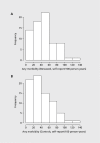Physiological correlates of bereavement and the impact of bereavement interventions
- PMID: 22754285
- PMCID: PMC3384441
- DOI: 10.31887/DCNS.2012.14.2/tbuckley
Physiological correlates of bereavement and the impact of bereavement interventions
Abstract
The death of a loved one is recognized as one of life's greatest stresses, with reports of increased mortality and morbidity for the surviving spouse or parent, especially in the early months of bereavement. The aim of this paper is to review the evidence to date to identify physiological changes in the early bereaved period, and evaluate the impact of bereavement interventions on such physiological responses, where they exist. Research to date suggests that bereavement is associated with neuroendocrine activation (cortisol response), altered sleep (electroencephalography changes), immune imbalance (reduced T-lymphocyte proliferation), inflammatory cell mobilization (neutrophils), and prothrombotic response (platelet activation and increased vWF-ag) as well as hemodynamic changes (heart rate and blood pressure), especially in the early months following loss. Additional evidence suggests that bereavement interventions have the potential to be of value in instances where sleep disturbance becomes a prolonged feature of complicated grief, but have limited efficacy in maintaining immune function in the normal course of bereavement.
La muerte de un ser querido es reconocida como uno de los mayores estresores de la vida, especialmente en los primeros meses del duelo, lo que se basa en reportes del aumento de la morbi-mortalidad de la esposa o del padre sobreviviente. El objetivo de este artículo es revisar la evidencia disponible a la fecha para identificar los cambios fisiológicos en el primer período del duelo y evaluar el impacto de las intervenciones sobre éste en las respuestas fisiológicas cuando ellas se presentan. La investigación actual sugiere que el duelo se asocia especialmente en los primeros meses que siguen a la pérdida con: activación endocrina (respuesta de cortisol), sueño alterado (cambios electroencefalográficos), desbalance inmune ((proliferación reducida de linfocitos T), movilización de células inflamatorias (neutrófilos), respuesta protrombótica (activación plaquetaria y aumento del antígeno de Factor von Willebrand) y también hemodínámícos (frecuencia cardíaca y presión sanguínea). La evidencia adicional sugiere que las intervenciones sobre el duelo son potencialmente valiosas en situaciones donde el trastorno del sueño se constituye en una característica prolongada del duelo complicado, pero tienen una eficacia limitada en el mantenimiento de la función inmune durante el curso normal del duelo.
La perte d'un être aimé est reconnue comme étant l'un des stress les plus importants de la vie, avec une morbidité et une mortalité augmentées chez l'époux ou le parent survivant, surtout dans les mois qui suivent la perte, Le but de cet article est d'analyser les preuves actuelles des modifications physiologiques de la période précoce qui suit cette perte et d'évaluer l'impact des interventions sur ces réponses physiologiques, là où elles existent. Jusqu'à présent, la recherche suggère qu'une perte affective est associée à une activation neuroendocrinienne (réponse cortisolique), un sommeil altéré (modifications électroencéphalographiques), un déséquilibre immunitaire (prolifération diminuée des lymphocytes T), une mobilisation des cellules de l'inflammation (neutrophiles), une réponse pro-thrombotique (activation plaquettaire et augmentation des antigènes du facteur von Willebrand soit vWF-ag) ainsi que des modifications hémodynamiques (fréquence cardiaque et pression artérielle), surtout dans les mois qui suivent la perte. Des preuves supplémentaires suggèrent que les interventions après une perte affective peuvent avoir un effet dans les cas où les perturbations du sommeil prolongent un deuil compliqué mais elles sont peu efficaces sur le maintien de la fonction immunitaire au cours de l'évolution normale du deuil.
Keywords: bereavement; blood pressure; complicated grief; cortisol; heart rate; immune; intervention; mortality; prothrombotic; sleep.
Figures





References
-
- Young M., Benjamin B., Wallis C. The mortality of widowers. Lancet. 1963;13:454–456. - PubMed
-
- Manor O., Eisenbach Z. Mortality after spousal loss: are there sociodemographic differences? SocSciMed. 2003;56:405–413. - PubMed
-
- Lichtenstein P., Gatz M., Berg S. A twin study of mortality after spousal bereavement. Psychol Med. 1998;28:635–643. - PubMed
-
- Jones MP., Bartrop RW., Forcier L., Penny R. The long-term impact of bereavement upon spouse health: a 10-year follow-up. Acta Neuropsychiatries. 2010;22:212–217. - PubMed
Publication types
MeSH terms
Substances
LinkOut - more resources
Full Text Sources
Medical
Miscellaneous
